Meta Quest 3 vs. Quest 2: Should you upgrade?
A face-off between Meta's affordable VR headset offerings
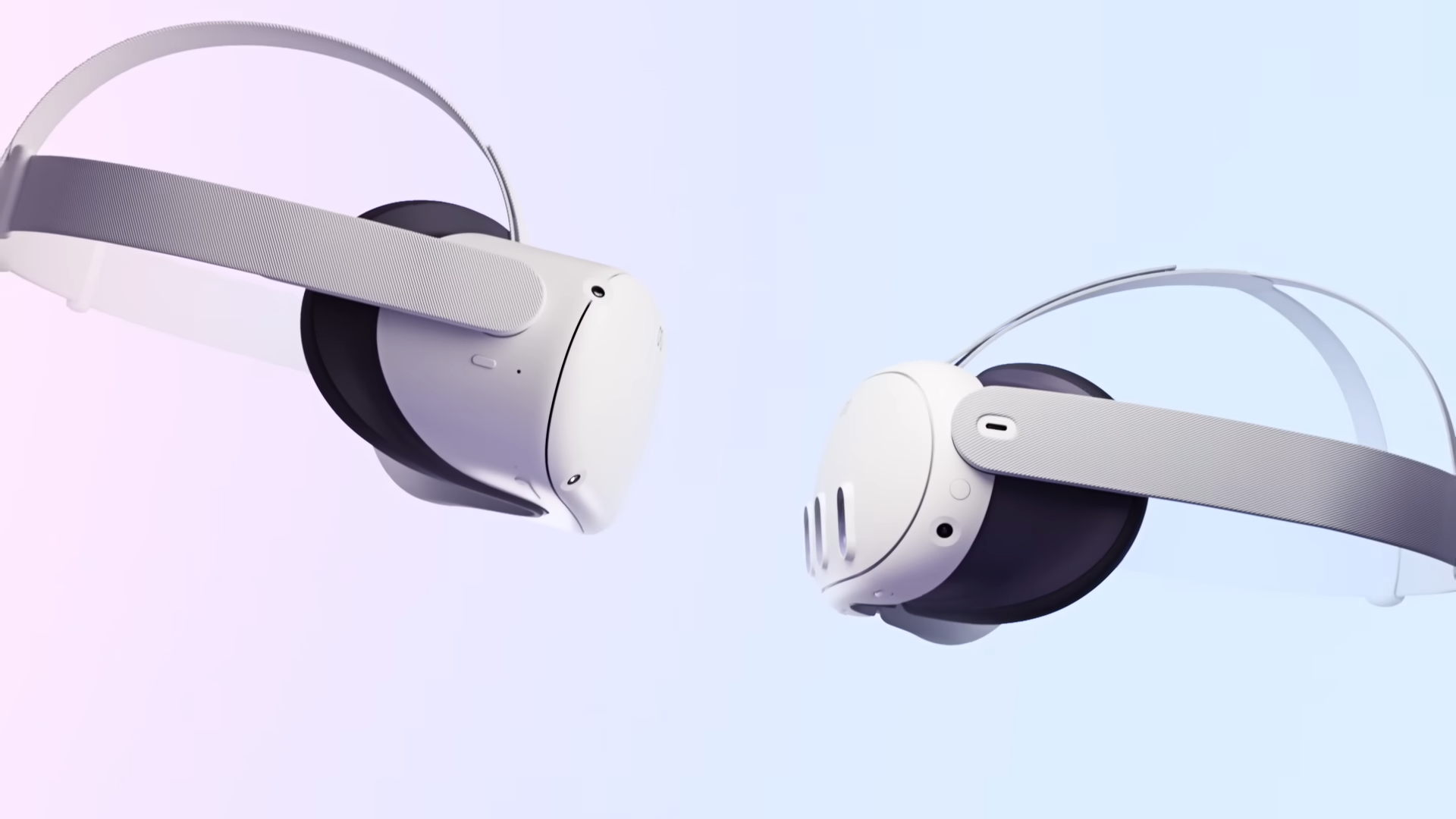
The Meta Quest 3 is here and shipping soon, so whether you are a Quest 2 owner considering an upgrade or you've held out on buying a VR headset, the question of how the Quest 3 stacks up against the Quest 2 is a critical one.
Meta's affordable VR headset line is likely going to draw even more attention this year as Apple's Vision Pro will launch in the near future at a startling $3,499, so either of Meta's sub-$500 headsets are a steal by comparison.
Without further ado here's a look at the Quest 3 vs. Quest 2.
| Row 0 - Cell 0 | Meta Quest 3 | Meta Quest 2 |
| Starting price | $499 | $299 |
| Chipset | Qualcomm Snapdragon XR2 Gen 2 | Qualcomm Snapdragon XR2 |
| Storage | 128GB or 512GB | 128GB, 256GB |
| RAM | TBA | 6GB |
| Display resolution | 2,064 x 2,208 pixels per eye | 1,832 x 1920 pixels per eye |
| Lenses | Pancake lens optical stack | Single LCD |
| Tracking | Inside-out tracking via 6 cameras | Inside-out tracking via 4 cameras |
| Battery | TBA (Claimed 2.2 hours average battery life) | 3,640 mAh |
Meta Quest 3 vs. Quest 2: Price and availability
The Quest 2 price has been a bit of a rollercoaster ride over the last couple of years. Meta launched it starting at $299 in 2020 but raised that price to $399 last summer, however, the Quest 2 was dropping back to its original $299 at the original Quest 3 preview.
So that is the comparison point against the Quest 3, which is available for pre-order today starting at $499. The base model for each features 128GB of storage, and while the upgraded 256GB Quest 2 is just $349, the Quest 3 makes the leap to 512GB and a $649 price point.
Based on price alone the Quest 2 wins here, but considering all of the upgrades that we'll address below, the Quest 3 starting at $499 is at least as good of a value.
Winner: Draw
Sign up to receive The Snapshot, a free special dispatch from Laptop Mag, in your inbox.
Meta Quest 3 vs. Quest 2: Design
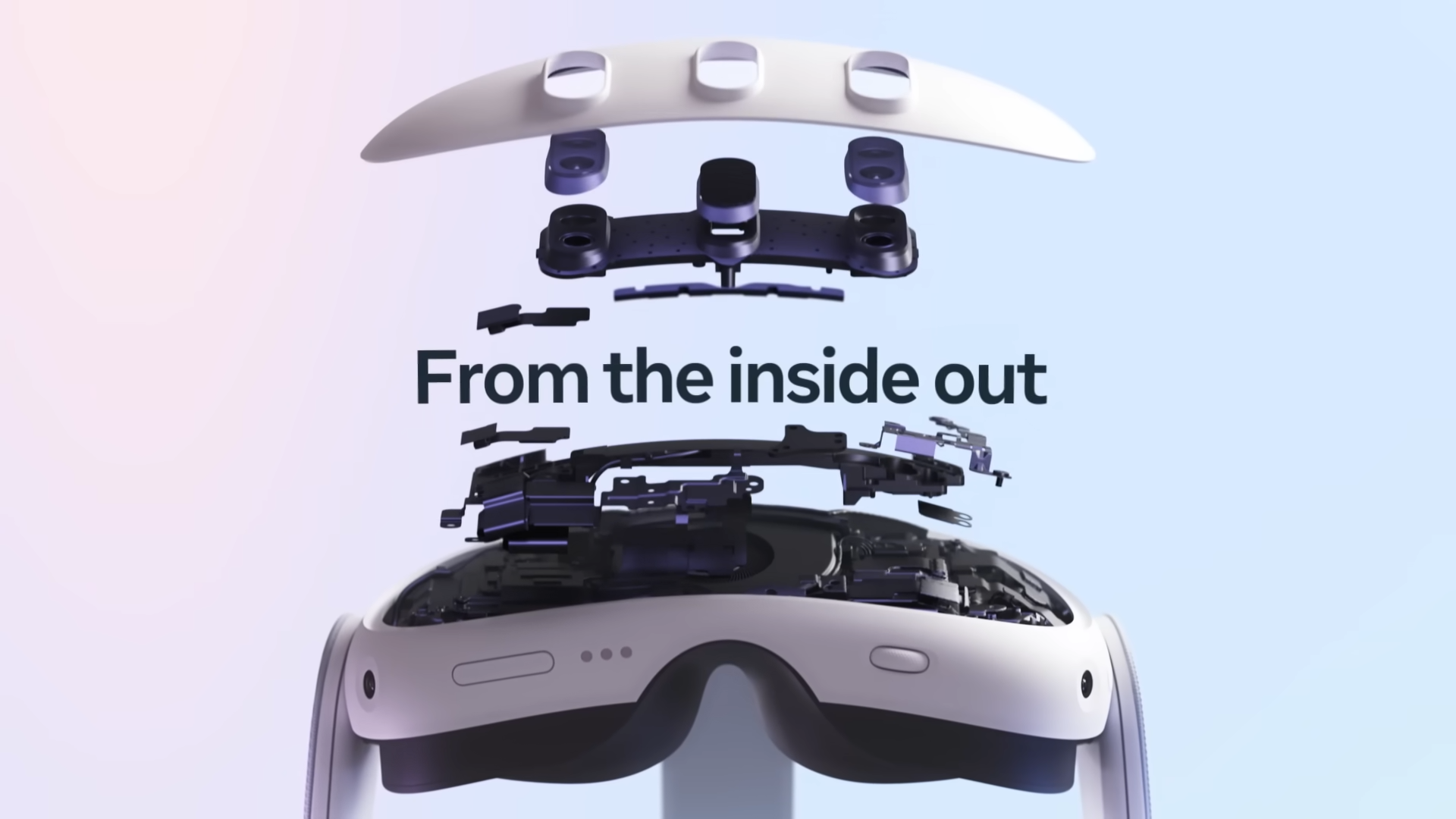
While Quest 3 and Quest 2 are unmistakably related even at a glance, there are some notable changes for the new version.
Both feature the same all-white aesthetic with a matte plastic body. While the Quest 3 has slimmed down considerably (40% slimmer than the Quest 2), it retains the same basic lines of its predecessor.
The Quest 2 features four indented areas, one at each corner, that include the trackers for positioning. On the top of the headset, there's a volume rocker. On the right side, you'll find its power button. A fabric strap extends from a set of plastic arms on the sides of the Quest 2 to secure it in place, although we recommend that anyone purchasing the Quest 2 also pick up the $59.99 Elite Strap which improves comfort and fit considerably.
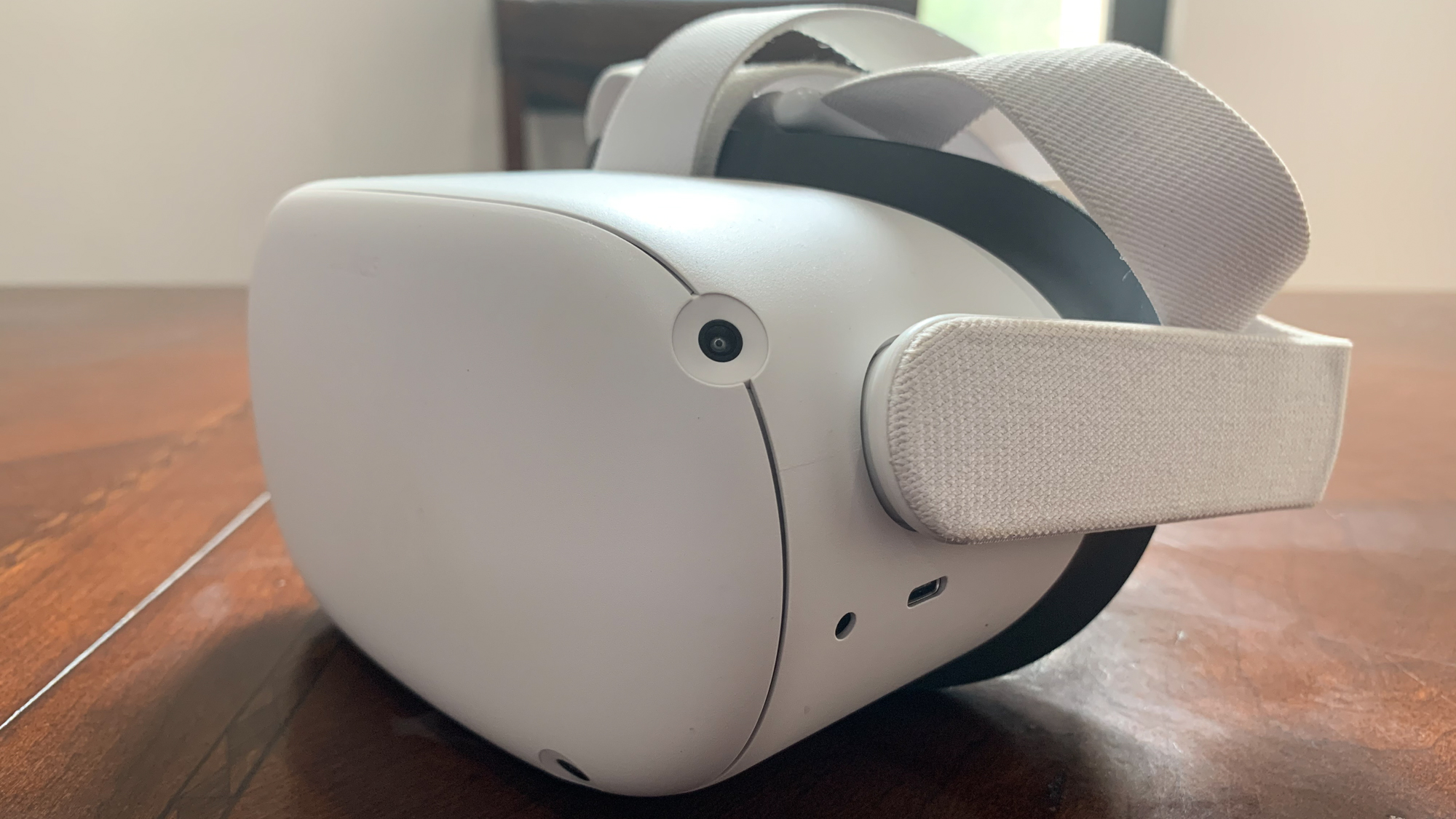
A black foam lining surrounds the portion of the Quest 2 that presses up against your face. Meta now includes a silicon cover that goes over this foam as many were experiencing issues with this foam as playing VR for extended periods can get a little sweaty, and the silicon is far easier to clean.
The Quest 2's inner goggles have three IPD (inter-pupillary distance) adjustment levels. This is crucial for getting the best possible image and you need to remove the headset to make this adjustment, so it's a bit of trial and error.

The Quest 3 adds 3 sensors to the front of the headset, which may trigger some with a particular phobia, and does give the headset a slightly more odd appearance overall compared to the minimalist look of the Quest 2.
The fabric band of the Quest 3 is more robust according to Meta, but that is a claim that we'll have to experience to weigh in on properly. It's possible that due to the considerably lighter weight something like the Elite Strap is no longer necessary, but again we'll believe that when we've experienced it for ourselves.

The Quest 3 moves the volume to the bottom of the headset and thankfully takes a page from the Quest Pro playbook and adds a wheel to find your preferred IPD setting on the bottom of the goggles as well. Not only does this give you a greater range of options, but it lets you set it without removing the goggles.
From a purely aesthetic standpoint I think the Quest 2 is probably the winner, but factoring in the dramatically thinner profile I have to give this to the Quest 3 as that could be game-changing when it comes to usability and comfort.
Winner: Quest 3
Meta Quest 3 vs. Quest 2: Ports
Both the Meta Quest Pro and Quest 2 feature a USB-C port for charging and transferring data.
The Quest 2 has a 3.5mm headset jack for connecting your favorite headphones, but the Quest 3 drops it.
Winner: Quest 2
Meta Quest 3 vs. Quest 2: Controllers
Similar to the changes to the headset design, the Quest 3 takes some cues from the Quest Pro in cutting away extraneous bits from the Quest 2's third-generation Oculus Touch controllers. The main difference is the removal of the loop at the top of the Quest 2 controller. The rest remains largely the same with middle-finger and index-finger triggers as well as a capacitive joystick, touchpad, and face buttons.
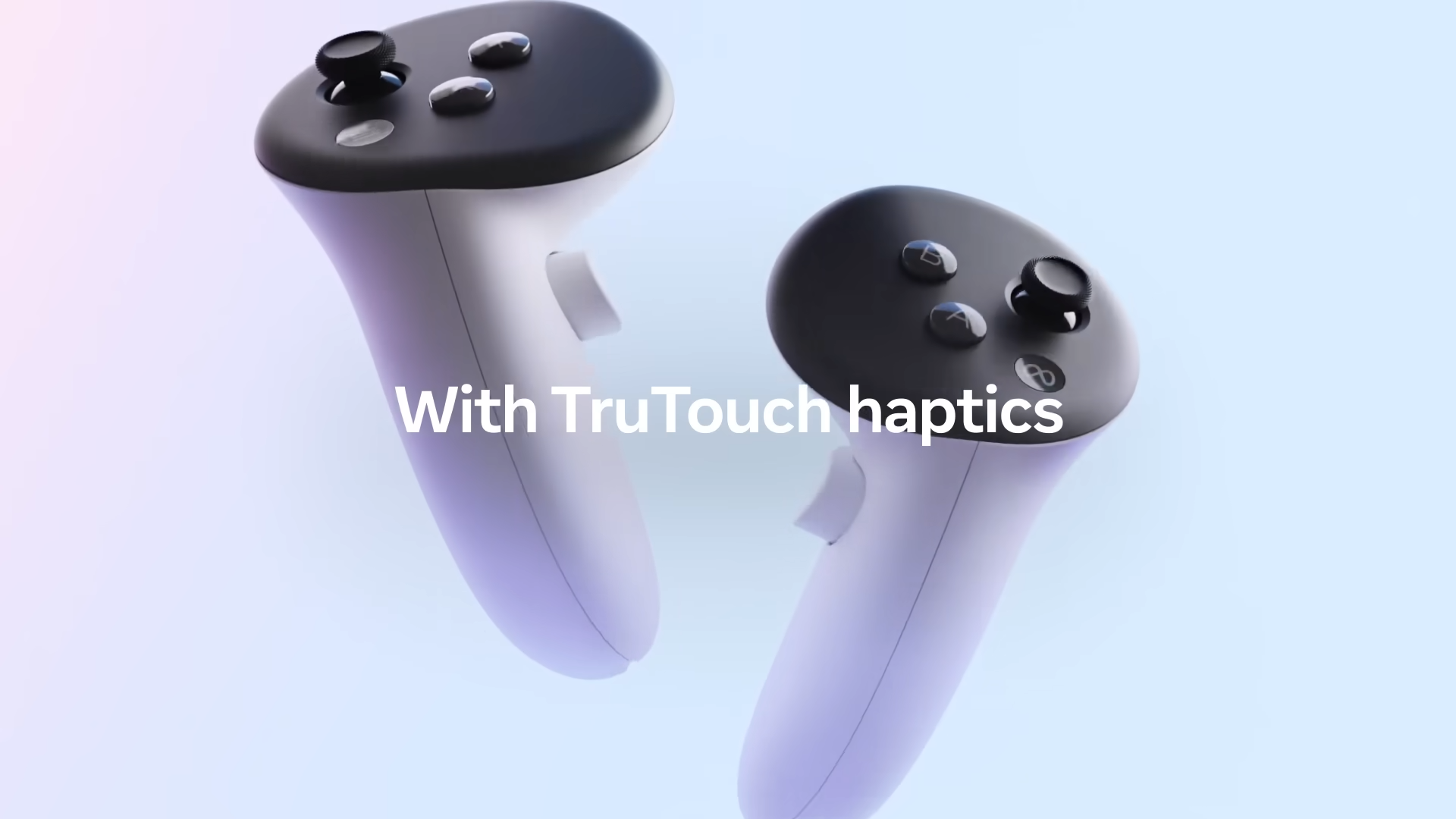
Inside the haptics should be vastly improved and we did find the Quest Pro controllers more comfortable than the original Quest 2 controllers, so it seems likely that will carry over to the Quest 3 controllers as well.
Winner: Quest 3
Meta Quest 3 vs. Quest 2: Experience
This is without question the biggest break between the Quest 3 and the Quest 2, while the latter is a VR headset and nothing more, the former is a mixed-reality AR/VR headset. Similar to what we are expecting to get from Apple's AR/VR headset, this means that it can offer app and gaming experiences that blend in with the actual environment around you.

This is thanks to the new full-color passthrough mode enabled by those new sensors on the front of the Quest 3, by comparison, the Quest 2 can only offer a fuzzy grayscale look at reality that is only helpful for not running into things.

This opens up a literal world of new possibilities for the Quest 3, similar to what we saw with the Quest Pro. You could potentially use the Quest 3 for productivity tasks, using your actual laptop while augmenting it with additional virtual displays appearing alongside it.
Games will also be able to overlay on reality, with a virtual tabletop gaming environment shown in the trailer for Quest 3, letting players roll their dice and watch the results of their actions playout on a virtual board placed on their table thanks to the depth sensor in the Quest 3.

There's a lot that could be done with the addition of AR to the Meta Quest 3, so it unquestionably takes the win in this category, but it is far less proven than VR. While some argue that the "killer app" for VR still hasn't arrived, that is even more true for AR right now.
With Apple joining the mixed-reality market this year, there is every reason to believe it has the potential to explode over the next couple of years.
Winner: Quest 3
Outlook
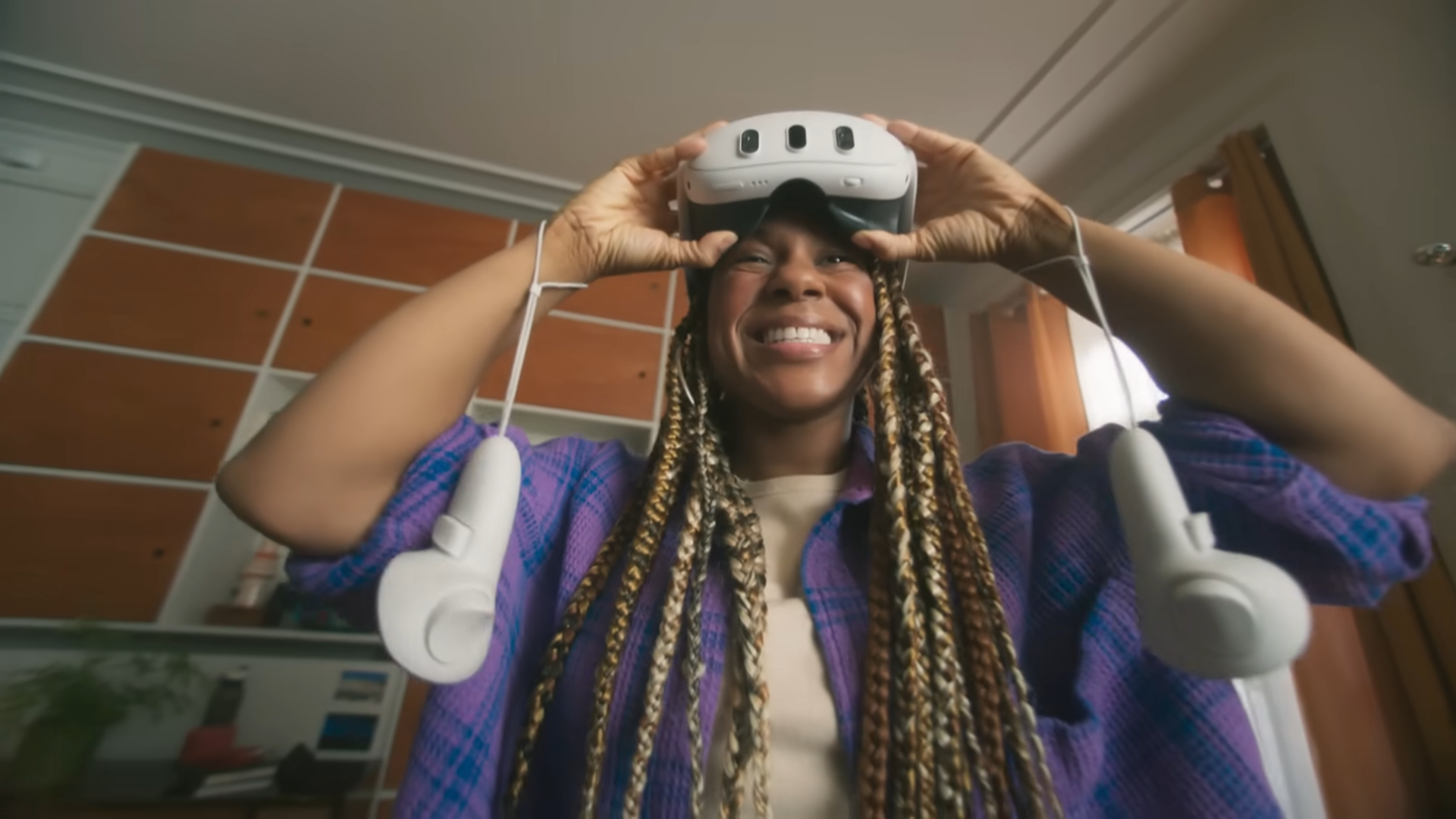
It should come as no shock that the Quest 3 is better than the Quest 2, but the question is whether it is $200 better.
The mixed-reality component is the easiest differentiator, if that sounds intriguing to you then you have to opt for the Quest 3 as the Quest 2 has nothing comparable.
However, that's hardly all that gives Quest 3 the edge. The 40% size reduction is a game-changer as well. While the Quest 2 combined with the Elite Strap is solid and comfortable, you will never forget that you have a large headset strapped to your face. Add to this the higher resolution lenses, the more powerful (and hopefully efficient) Snapdragon XR2 Gen 2 chipset, and the redesigned controllers with improved haptics and it's an incredibly enticing package.
So who should still go for Quest 2? If the mixed-reality doesn't sound like anything you would use and you will mostly stick to relatively short (20-30 minute) VR sessions where the weight difference won't mean much to you, then saving $200 to spend on VR apps and games is probably the right choice.
If you are a hardcore Quest 2 user now then Quest 3 is going to be hard to pass up as it is better in every regard. At least you can sell your Quest 2 to help offset some of the cost.
We'll update this face-off again once we have our full Quest 3 review complete, but overall we're impressed with the upgrades and the Quest 3 is likely the right choice for most VR headset buyers today.
Sean Riley has been covering tech professionally for over a decade now. Most of that time was as a freelancer covering varied topics including phones, wearables, tablets, smart home devices, laptops, AR, VR, mobile payments, fintech, and more. Sean is the resident mobile expert at Laptop Mag, specializing in phones and wearables, you'll find plenty of news, reviews, how-to, and opinion pieces on these subjects from him here. But Laptop Mag has also proven a perfect fit for that broad range of interests with reviews and news on the latest laptops, VR games, and computer accessories along with coverage on everything from NFTs to cybersecurity and more.

